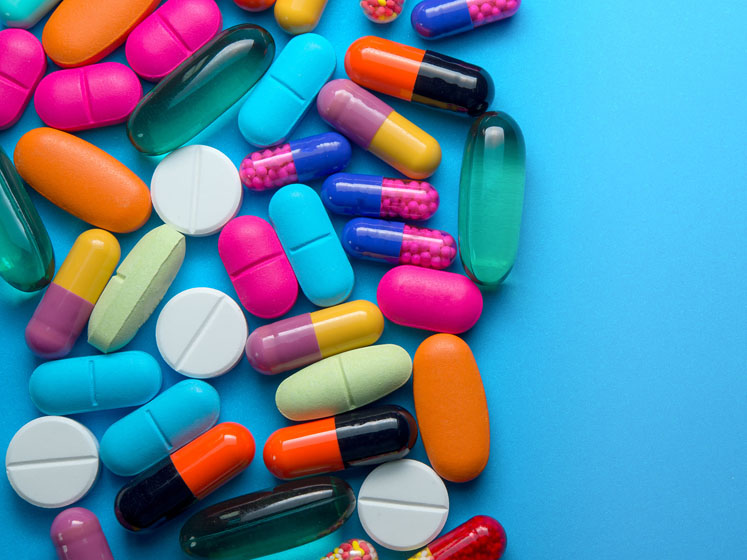Truly novel chemical entities that have been designed and manufactured as pharmaceutical excipients are exceptionally rare. The few examples in the recent past have incurred very large development costs, not least in the demonstration of patient safety, and have been underutilised by the pharmaceutical industry.
Why would you formulate with a novel excipient knowing the regulatory scrutiny of the marketing authorisation dossier may trigger additional questions and delays when using a traditional excipient would not incur such questions … even if it did not perform as well?
This is another block to the development of new therapeutic approaches, especially using biopharmaceuticals (“big molecules”), which often require new excipients with novel properties.
An excellent example are the polar lipids used to encapsulate the mRNA in COVID-19 vaccines. Indeed, without these excipients, there would have been no effective vaccine using mRNA.
The acute need for a successful vaccine outweighed any reluctance to use novel excipients, which allowed all parties — the excipient manufacturer, the vaccine maker and the regulatory authorities — to take pragmatic steps to accelerate the use and approval of these substances.
The US FDA now acknowledges that the lack of novel excipients is indeed a problem, noting the limitations of existing excipients in some drug product scenarios.
On 7 September 2021, they announced the Novel Excipient Review Pilot Program. This will select and then review four novel excipients in the next 2 years using a new pathway.

Iain Moore
This will allow manufacturers to obtain an FDA review prior to the use of the novel excipient in a drug formulation. Note, though, that this is not an excipient approval process; the novel excipient would still be evaluated as part of the overall drug product approval.
In Europe, the absence of an excipient master file system is a specific problem that means the only way to introduce a novel excipient is via the marketing authorisation dossier; therefore, all information about the excipient has to be shared with the pharmaceutical manufacturer, including all the intellectual property invested in the new excipient.
At least in the US, Canada, Japan and now China, excipient master files exist that allow some protection of the excipient manufacturer’s intellectual property. So, we can expect to see novel excipients used first in these regions — at the expense of patients in Europe who may miss out on new therapies.
For novel excipients, one pathway is clear; as these are intended to be used in pharmaceutical drug products and have not been repurposed from other applications, the GMPs to be applied may have to be more akin to ICH Q7 for actives than for traditional excipients.
This is in accordance with the previously mentioned ascertaining GMP risk assessment guide; as there is less knowledge about the manufacture and use of novel excipients, higher standards may be required to mitigate the risks.
If there is one bright spot with regards to novel excipients, then the new lipids used to encapsulate mRNA vaccines can be repurposed to perform the same duty with other actives that require the same delivery mechanisms.
This multiple application of a novel excipient could be a blueprint for further introductions. Rather than designing one for a certain drug product, it is designed for a specific purpose and hence can be applied to multiple drug products.
Consequently, some of the risks of developing and introducing the novel excipient can be mitigated. The success of this strategy has been proven, so we can expect others to follow.
Economics
The pandemic and, perhaps more so, its aftermath with the acute disruption of global supply chains has brought the risks of sourcing materials for drug products on a worldwide scale into sharp focus.
The natural reaction will be to redress the risks by obtaining excipients more locally, with cost savings by sourcing more remotely being demoted in priority. How long this trend lasts will depend on how long lasting the pandemic and its repercussions will be, but the adjustments are likely to be permanent for the most critical drug products (especially COVID-19 vaccines).
Many excipients were not designed for drug products and were designed for use in other industries, such as food, cosmetics, etc. This position is being eroded and we can expect to see more and more of the traditional excipients being manufactured exclusively for pharmaceutical use.

It is possible that a few suppliers will take the lead in this and that, as a result, the number of suppliers will decrease in the coming years. Subsequently, closer collaborations between excipients suppliers and users will develop from what is often a very distant relationship.
Sustainability
The awful human tragedy associated with the COVID-19 pandemic is not the only global crisis of our times; that of global warming and its consequences will also have a damaging impact on human lives as the current news programmes continue to show.
Other industries are taking the brunt of attention in decarbonising, but there is a slow groundswell within the pharmaceutical industry that will gain momentum in the next 3–5 years.
Initial steps may include removing environmentally hazardous and toxic substances from the manufacture and testing of drug products, and more frequent use of remote and third-party auditing.
The next steps will involve the principles of the circular economy in all aspects of the industry, including excipients. Here substitutions from fossil-based substances to sustainably sourced ones will have to be found, and this will pose a number of scientific challenges — not least ensuring the replacements have the same or better quality, purity and patient safety profiles.
Such changes are going to be applied externally to the industry and are likely to be led by both government and social influences.
Conclusions
The very nature of the industry puts patient safety first and foremost, and rightly so. This makes change in the developed world rather slow and measured.
Yet, the emerging economies, unencumbered by a well-oiled infrastructure, are forging ahead with new standards and ways of dealing with excipients. The pandemic too has demonstrated that a much faster pace of change does not mean that patient safety has to be compromised.
In the next 3–5 years, we can therefore expect to see an acceleration of the existing trends that examine the composition and purity of excipients in ever more detail, as well as the emergence of sustainability as an important factor.
Supply chain perturbations owing to the pandemic may turn out to be transitory, unless political factors also weigh in; the economics of a low-cost supplier will usually win in the end.
Additionally, significant barriers to the introduction of novel excipients remain, despite the success with those utilised in mRNA-based COVID-19 vaccines.
In this regard, Europe is at a distinct disadvantage in the protection of the excipient manufacturer’s intellectual property, and so could well miss out on new therapies using novel excipients, delaying patient access.
Regardless of these changes and challenges, we can be assured that excipients will continue to be a critical component of the success of drug products.
This article was originally published in the CPhI Annual Report 2021 and is reproduced with kind permission.
Part I is available here.
